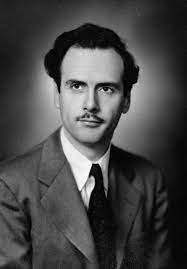McLuhan, Marshall

Bio: (1911–1980) Canadian theorist of media and communications. McLuhan studied at the University of Manitoba and the University of Cambridge. At the beginning of his career, he taught at several universities in Canada and the United States and later moved to the University of Toronto in 1946, where he stayed for the rest of his life.
McLuhan’s first book The Mechanical Bride: Folklore of Industrial Man (1951) consists of a collection of essays on popular culture, advertising, and mass culture, which are all products of the cultural industry, and how all of those influence the public. His critique of advertising and mass culture, which states that they are alienating the public, resembles those of the Frankfurt School.
In The Gutenberg Galaxy (1962) McLuhan studies how the printing press and printed books and press rearranged the culture, consciousness, and sensibilities after the invention of the printing press by Gutenberg. This book introduced two new concepts – “global village” and “Gutenberg galaxy”. Global village refers to time and space distances losing their significance due to the development and spread of printing technology. This new technology allowed for mass communication that shaped contemporary culture and created a village-like mindset all over the world. Gutenberg galaxy is a globally accumulated body of intellectual and artistic works, which is contained in all printed materials over the centuries.
McLuhan, influenced by the work of Canadian political economist and communication theorist Harold Innis wrote the book Understanding Media: The Extensions of Man (1964) which focuses on a new way of understanding media. McLuhan sees a medium as any extension of humans that allows them to communicate. That includes technologies usually consider as media –television, radio, and newspapers – but also cars, electricity, and language itself. While conventional studies of media focused on its content, McLuhan instead sees the real meaning or message of media to be its ability to amplify and accelerate existing processes, which introduces a "change of scale or pace or shape or pattern into the human association, affairs, and action", in that way changing society, culture, and individual psychology.
This intricate process is subsumed in McLuhan’s famous idiom "the medium is the message." An example of this process is a printing technology that enabled the dissemination and formation of national symbols and national languages. In the same book, McLuhan introduces the distinction between two types of media: “cool media” which involves active users connected to the media on a deeper level, and “hot media” that don’t connect users with media on a deep level and makes users passively consume the content. Electric media changed the perception of time and space and permitted the development of cool media. Electric media truly brought the age of the global village and rendered national forms of identification irrelevant.
In the book Laws of Media: The New Science (1988) McLuhan and his son and coauthor Eric introduce four invariable laws that govern the actions of all media. Those laws are: 1) all media extend or amplify some process, 2) in doing so it makes established media obsolete, 3) but it also returns to surface some older obsolete media in a new form, 4) and that media finally reverts to previous characteristics when is pushed to the limit.
Fields of research
Media Art Capitalism Character, Social Communication Conformity Consumerism Control, Social Corporations Diffusion Economy Ethnicity Everyday Life Geography Globalization History Identity Ideology Industry Innovation Knowledge Language Management Market Marketing Modernity and Modernization Nonverbal Communication Postindustrial Society Public Opinion Sign and Symbol Technology TimeMain works
The Mechanical Bride: Folklore of Industrial Man (1951);
The Gutenberg Galaxy: The Making of Typographic Man (1962);
Understanding Media: The Extensions of Man (1964);
The Medium is the Massage (1967);
War and Peace in the Global Village: An Inventory of Some of the Current Spastic Situations That Could Be Eliminated by More Feedforward (1968);
Through the Vanishing Point: Space in Poetry and Painting (1968);
Culture Is Our Business (1970);
From Cliché to Archetype (1970);
Take Today: The Executive as Dropout (1972);
Laws of Media: The New Science (1988);
The Global Village (1989):
The Medium and the Light: Reflections on Religion (1999).

